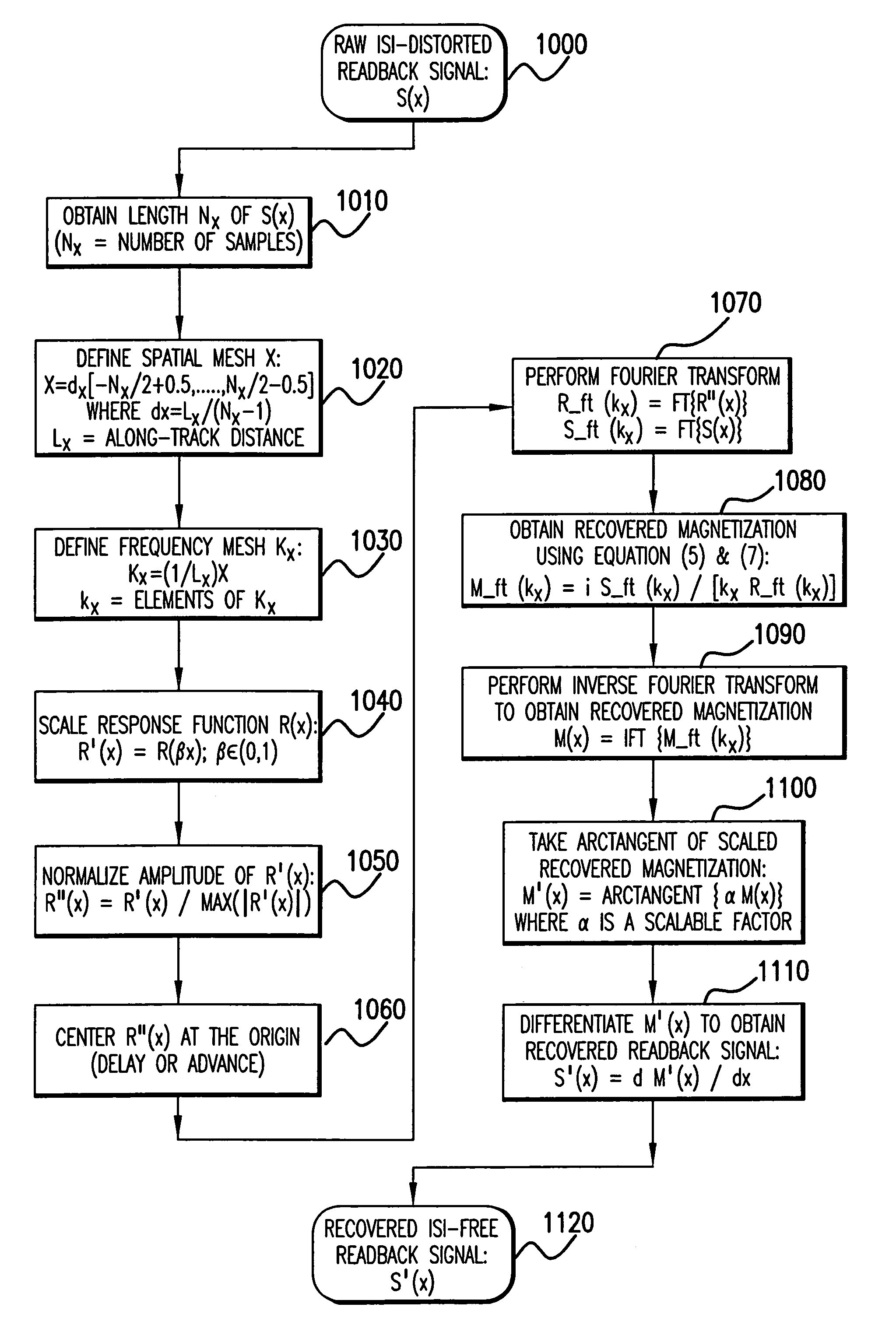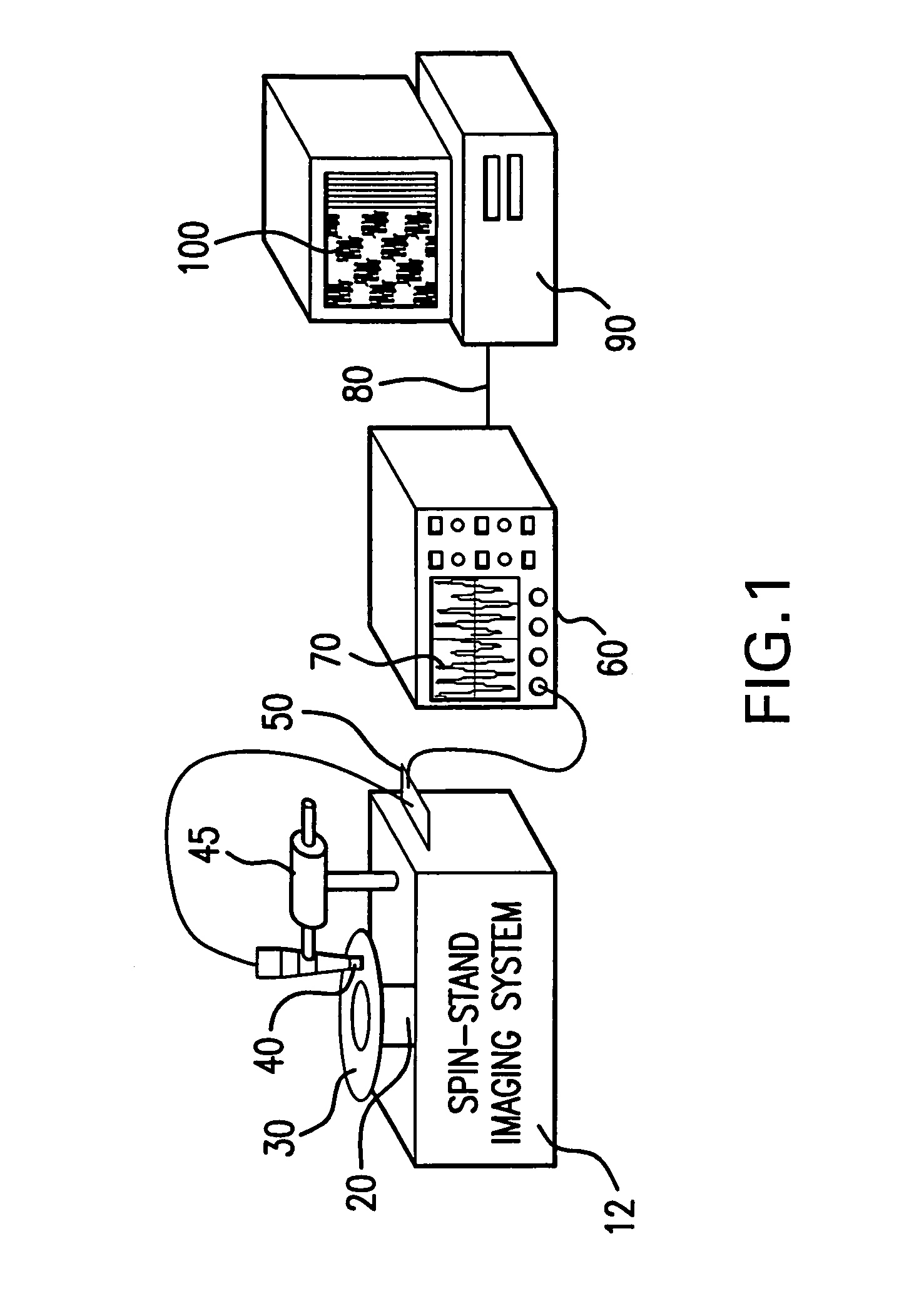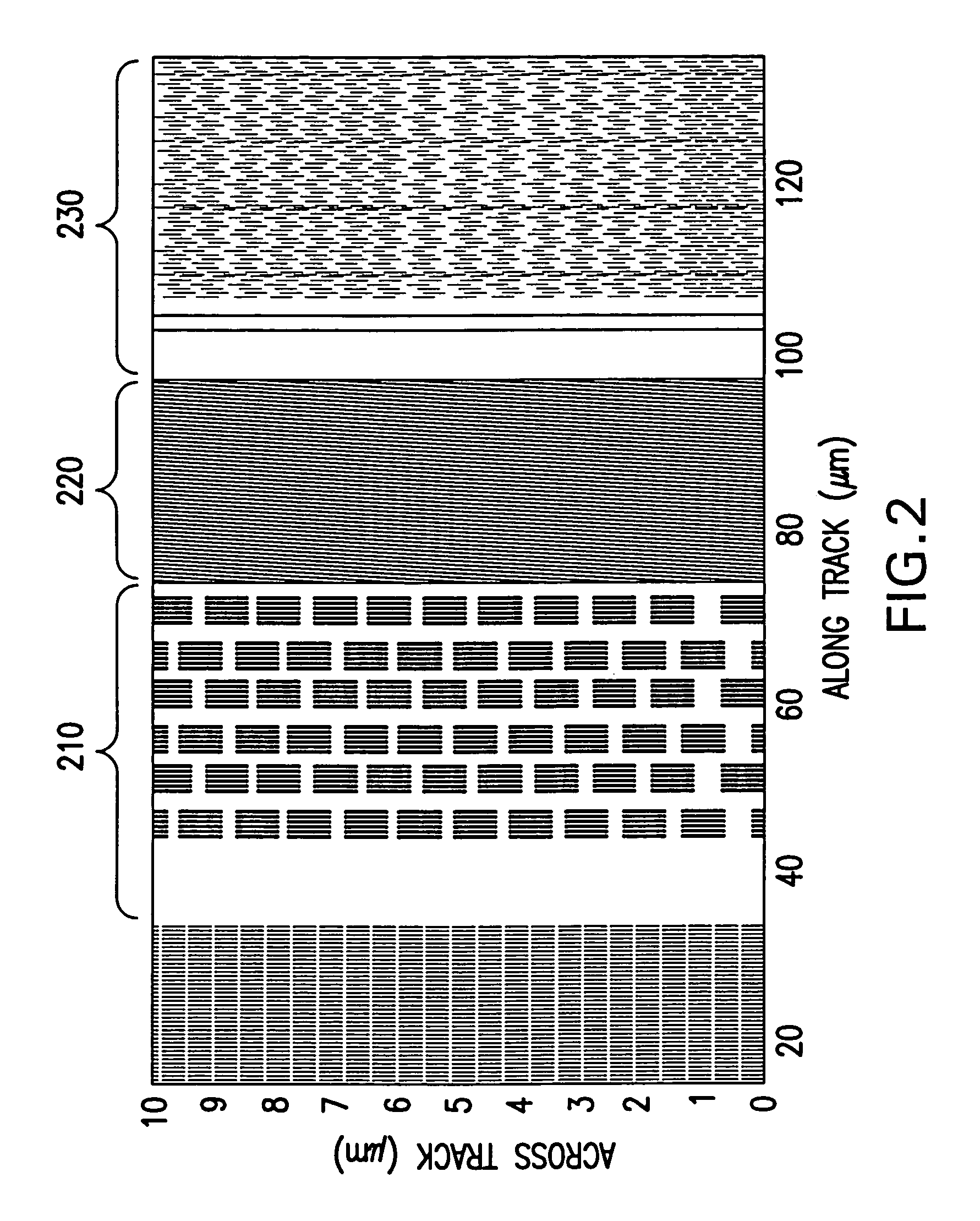Method for intersymbol interference removal in data recovery
a data recovery and intersymbol technology, applied in the field of data recovery, can solve the problems of unsuitable read detection methods for recovering unreadable hard disk data, drive data will be unreadable, damage both the internal and external components, etc., and achieve the effect of effectively removing isi
- Summary
- Abstract
- Description
- Claims
- Application Information
AI Technical Summary
Benefits of technology
Problems solved by technology
Method used
Image
Examples
Embodiment Construction
[0029]In an exemplary embodiment of the method of the present invention, the magnetically coated media is extracted from its native operating environment and mounted on a device which can perform magnetically recorded data reading operations under user control. Generally, the magnetic media is installed on a device which is capable of positioning a magnetoresistive transducer over a user-selectable location and drive mechanism for producing a change in magnetic flux about the magnetoresistive transducer at the user-selected location, where the change in magnetic flux corresponds to previously-written, magnetically polarized regions on the magnetically coated media.
[0030]For the case of hard disk drives, the carrier of magnetically coated media is a thin, rigid disk, which, in accordance with an exemplary embodiment of the present invention, is mounted on a sophisticated device called a spin-stand. Such a spin-stand, and associated equipment, is illustrated in FIG. 1. As is shown in ...
PUM
| Property | Measurement | Unit |
|---|---|---|
| magnetic flux | aaaaa | aaaaa |
| magnetic | aaaaa | aaaaa |
| voltage | aaaaa | aaaaa |
Abstract
Description
Claims
Application Information
 Login to View More
Login to View More - R&D
- Intellectual Property
- Life Sciences
- Materials
- Tech Scout
- Unparalleled Data Quality
- Higher Quality Content
- 60% Fewer Hallucinations
Browse by: Latest US Patents, China's latest patents, Technical Efficacy Thesaurus, Application Domain, Technology Topic, Popular Technical Reports.
© 2025 PatSnap. All rights reserved.Legal|Privacy policy|Modern Slavery Act Transparency Statement|Sitemap|About US| Contact US: help@patsnap.com



